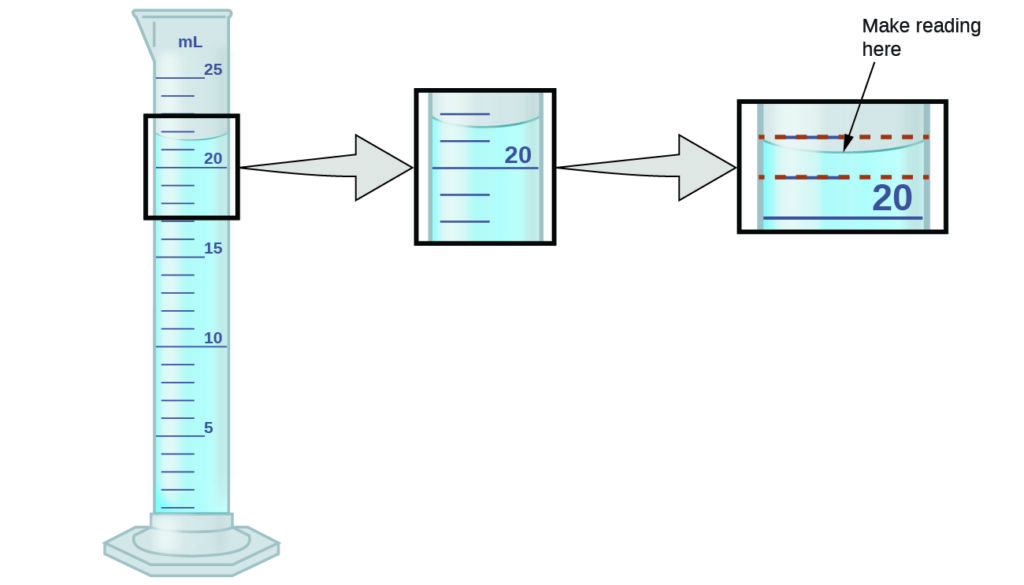Every measurement you take as a scientist includes some unavoidable uncertainty (also sometimes called “error”, even though no mistake was made). We can see this easily by imagining some of the measurements we commonly do in lab.
If you place a quarter on a standard electronic balance, you may obtain a reading of 6.72 g. The digits 6 and 7 are certain, and the 2 indicates that the mass of the quarter is likely between 6.71 and 6.73 grams. If you re-weighed the quarter, you might measure 6.71 g or 6.73 g as often as 6.72 g. These fluctuations are caused by variables like random fluctuations in the electronics, centering of the quarter on the balance pan, and breezes in the room (see Sources of Error for more discussion).
The quarter weighs about 6.72 grams, with a small uncertainty in the measurement of ± 0.01 gram. If the coin is weighed on a more sensitive balance, the mass might be 6.723 g. This means its mass lies between 6.722 and 6.724 grams, an uncertainty of 0.001 gram. Every measurement has some uncertainty, which depends on the device used (and the user’s ability).
To measure the volume of liquid in a graduated cylinder, you should make a reading at the bottom of the meniscus, the lowest point on the curved surface of the liquid.

In the illustration above, the bottom of the meniscus in this case clearly lies between the 21 and 22 markings, meaning the liquid volume is certainly greater than 21 mL but less than 22 mL. The meniscus appears to be a bit closer to the 22-mL mark than to the 21-mL mark, and so a reasonable estimate of the liquid’s volume would be 21.6 mL. In the number 21.6, then, the digits 2 and 1 are certain, but the 6 is an estimate – another person might record this volume as 21.5 or 21.7 mL. Note that it would be pointless to attempt to estimate a digit for the hundredths place, given that the tenths-place digit is uncertain. Writing 21.62 mL when the volume range is expected to be 21.5-21.7 mL mis-represents how well we actually know this volume. (Consider: if the road sign says it is 190 km from Calgary to Brooks, your car’s odometer measures to 0.1 km, and your passenger says “actually, it’s 190.02 km”, is that difference relevant?)
Our ability to take correct measurements (and the small amount of uncertainty always present) is reflected in the accuracy and precision of the reported values, discussed in the next page.
The Exception: Exact Numbers
The exception to the rule that all measurements have some uncertainty are numbers that are counted or defined rather than measured.
Counted numbers are exact: you have 12 eggs in a dozen, never 12.02. If you took 3 measurements, you took exactly 3, not 2.5. When reading these values, there is no question that you mean exactly the number reported.
Defined numbers are forced to be exact, for example 1 kg is defined as exactly 1000 g (not 999.9). All unit conversions are defined in this way. Some physical constants are as well – for example the speed of light in vacuum is defined as exactly 299 762 498 m/s. When we use the full version of this value, it is an exact number (though we often round it off to $3.00 \times 10^{8} m/s $, which is then no longer the exact number – it is an approximation).